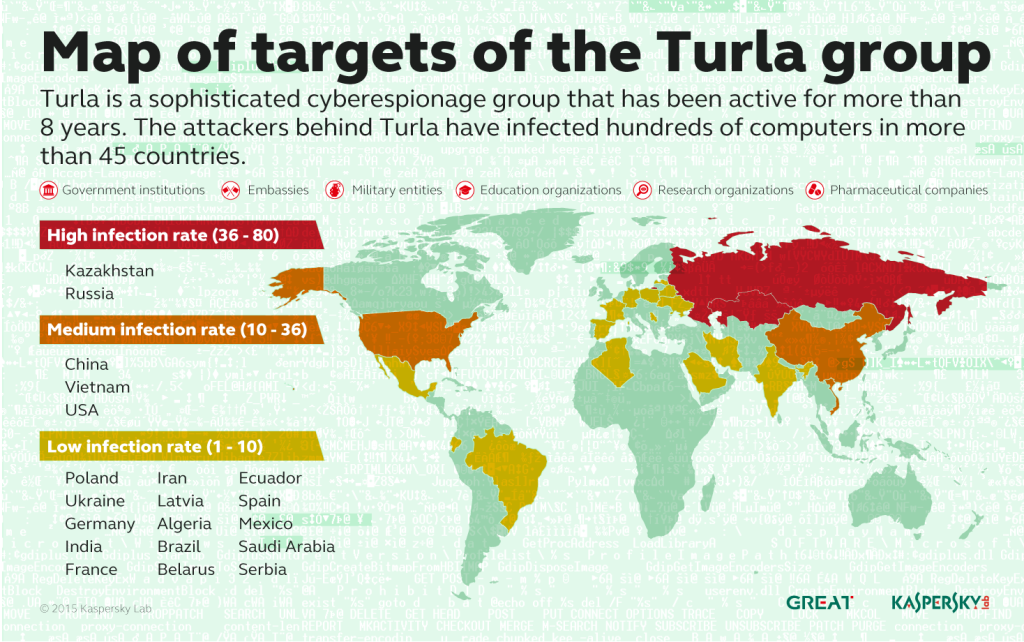How the Turla operators hijack satellite Internet links
Have you ever watched satellite television? Were you amazed by the diversity of TV channels and radio stations available? Have you ever looked in wonder at satellite phones or satellite-based Internet connections wondering what makes them tick? What if we told you that there’s more to satellite-based Internet connections than entertainment, traffic and weather? Much, much more.
When you are an APT group, you need to deal with many different problems. One of them, and perhaps the biggest, is the constant seizure and takedown of domains and servers used for command-and-control (C&C). These servers are constantly appropriated by law enforcement or shut down by ISPs. Sometimes they can be used to trace the attackers back to their physical locations.
Some of the most advanced threat actors or users of commercial hacking tools have found a solution to the takedown problem — the use of satellite-based Internet links. In the past, we’ve seen three different actors using such links to mask their operations. The most interesting and unusual of them is the Turla group.
Also known as Snake or Uroburos, names which come from its top class rootkit, the Turla cyber-espionage group has been active for more than 8 years. Several papers have been published about the group’s operations, but until the Epic Turla research was published by Kaspersky Lab, little information was available about the more unusual aspects of their operations, such as the first stages of infection through watering-hole attacks.
What makes the Turla group special is not just the complexity of its tools, which include the Uroboros rootkit, aka “Snake”, as well as mechanisms designed to bypass air gaps through multi-stage proxy networks inside LANs, but the exquisite satellite-based C&C mechanism used in the latter stages of the attack.
In this blog, we hope to shed more light on the satellite-based C&C mechanisms that APT groups, including the Turla/Snake group, use to control their most important victims. As the use of these mechanisms becomes more popular, it’s important for system administrators to deploy the correct defense strategies to mitigate such attacks. For IOCs, see the appendix.

